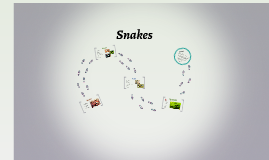Snake
Transcript: The Sanke River By the awesome me The snake river is a major tributary to the Columbia River The Snake River is the 12th longest river in the U.S. It is 1,040 miles long The Snake River has steelheads, salmon, catfish, sturgeon and walleye. 15-20 million revenue from local businesses 15,000 tourist travel down this river for day trips and dinner cruises per year. There are 40,000 jobs that depend on the trade that happens in the river. there are 10 million commercial cargos each year The third largest grain export gateway in the u.s. #1 grain export in the u.s. #1 brain export in the u.s. #1 west coast wood exports #1 west coast minearel bulk exports #2 west coast auto imports The Snake River is a major river in the greater Pacific Northwest in the United States. It is the largest and longest tributary of the Columbia River, which is the largest North American river that empties into the Pacific Ocean. In the 1960s and 1970s the U.S. Army Corps of Engineers built four dams and locks on the lower Snake River to facilitate shipping. Flooding of 1973 It was the most severe sense 1927. The 1927 flood left a disastrous impact upon the entire 1,250,000 mile river drainage. The unprecedented rainfall began over the whole basin in late summer 1926, and didn't abate until the summer of 1927. The flooding began at Memphis in the fall of 1926 and it was late August of 1927 before the last of the flood waters flowed into the Gulf below New Orleans. The levee system was decimated with over 120 crevasses and 165 million acres were inundated. There were 246 fatalities and over 600 thousand people were made homeless. The total damage was estimated at $230 million. Much of the eastern half of the United States had above-average rainfall in March. Severe floods occurred March 7-9 and 15-16, with streamflow remaining high between the two flood periods in several streams in central Wisconsin. Rainfall on March 17-19 caused severe flooding from western Virginia to southwestern Mississippi. Maximum discharges at more than 100 streamflow-gaging stations in Tennessee and northern parts of Mississippi, Alabama, and Georgia were greater than the previous maximum of record. The discharge at one gauging station on the Tennessee River in Alabama was the largest since at least 1867. The storms that caused this flooding were widespread over much of the area east of the Mississippi River. Strong winds associated with the storms caused severe flooding along the shores of the Great Lakes with damage in Michigan, Ohio, and New York. The Snake River By the awesome Me The Snake River originates in Yellowstone National Park, Wyoming, at 9,500 feet and winds through southern Idaho before turning north to form the boundary between Idaho and Oregon. The Snake River is very famous Dead animals were everywhere, some in trees, mostly deer and cows, and other critters too weak to fight the rapidly rising water to find higher ground. Birds, mostly vultures, and other carrion eaters were feasting on these leavings.

















